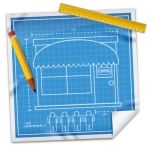 We’ve been spending some time talking about motivation in the classroom, but that is only part of the equation. Some students have a hard time focusing and paying attention in training. In a business setting, it is assumed that all of your trainees are adults and will do their best to pay attention to what is going on in class. You need to keep up their attention so that they can maximize their absorption of the materials, and be able to recount them when needed in their jobs.
We’ve been spending some time talking about motivation in the classroom, but that is only part of the equation. Some students have a hard time focusing and paying attention in training. In a business setting, it is assumed that all of your trainees are adults and will do their best to pay attention to what is going on in class. You need to keep up their attention so that they can maximize their absorption of the materials, and be able to recount them when needed in their jobs.
From personal experience, one of the easiest and quickest ways to get your class’ attention is to say something like “you might want to write this down… it will be on the test.” Telling the class that there will be an assessment at the end of the course has its merits as well, but this is dependent on your reputation and the precedent of giving assessments at the end of every training. We’ll talk about assessments in a future blog post, since it’s a major talking point in business training.
Indiana University states that the normal adult attention span is 15-20 minutes. In a training class, the teacher needs to be able to use this attention span to their advantage. Barraging your trainees with a mountain of content can overload them, so you need to break it up into smaller, easier to digest, chunks. I found an interesting list here to reference some tips on keeping an audience’s attention. Some of them are pretty easy – offer refreshments, give them a quick break, and use humor to keep them interested. I like #9 in particular: shake things up. Maybe assign an impromptu skit or Q&A session. Get the students up and moving around, maybe with an ice breaker or other activity. Keep the mood light, and be open and honest with your class about how important the material is, and you are there to facilitate their learning in the easiest way possible.
Sometimes you’re lucky enough to have managers in your class, who might be there as part of their job, or because they need to learn the materials just as much as their employees do. To keep their attention, all other external stimuli should be removed. Set some ground rules before the class begins: laptops should be closed and phones should be put away. If you’ve got a class where hands-on exercises on a computer is planned, walk around the room while you teach. Use your presence as an authority figure to press them into paying attention and not goof off on their computer. Distractions should be as limited as possible, obviously except for those that you plan as part of the course.
Above all, remember that people are still people, and that they can only hold their attention for so long. If you keep these things in mind, and make your class as interesting as possible, then you can say that you did your best to teach the materials and your class is ready for what’s coming next.
Photo credit: University of Texas








